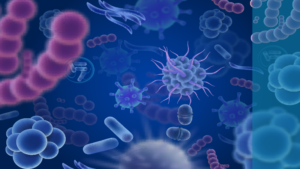
The good news about bacteria
Superbug slayer has strange origins.
Antimicrobial resistance is a global public health threat annually killing more than 1 million people worldwide. Because most of the antibiotics developed in labs are similar to preexisting antibiotics, bacteria can easily become resistant.
What’s the answer? It could be in the “bacteria dark matter” found in North Carolina’s sandy soil.
Dark matter is described as hard to culture in a lab. Recently researchers have developed a device that can recreate the conditions necessary to grow dark matter in a lab and produced a new type of antibiotic drug that is less likely to become resistant to treatment. An antibiotic alternative is great news.
Bacteria converts energy from thin air.
Small portable digital devices could soon be powered by a combination of hydrogen and a bacterial enzyme (named Huc) found in tuberculosis and leprosy. Known to be a possibility, scientists have figured out how to utilize the beneficial enzyme.
Huc draws energy from atmospheric hydrogen and miniscule amounts are all that’s necessary to make energy. Greater amounts could power larger devices or conceivably a car.
Capable of surviving extreme environments, Huc can make use of Antarctic soils, volcanic craters and the deep ocean. Scientists have also determined the enzyme can be stored for prolonged periods and survive temperature ranges from freezing to 176 degrees Fahrenheit. Huc energy has potential
